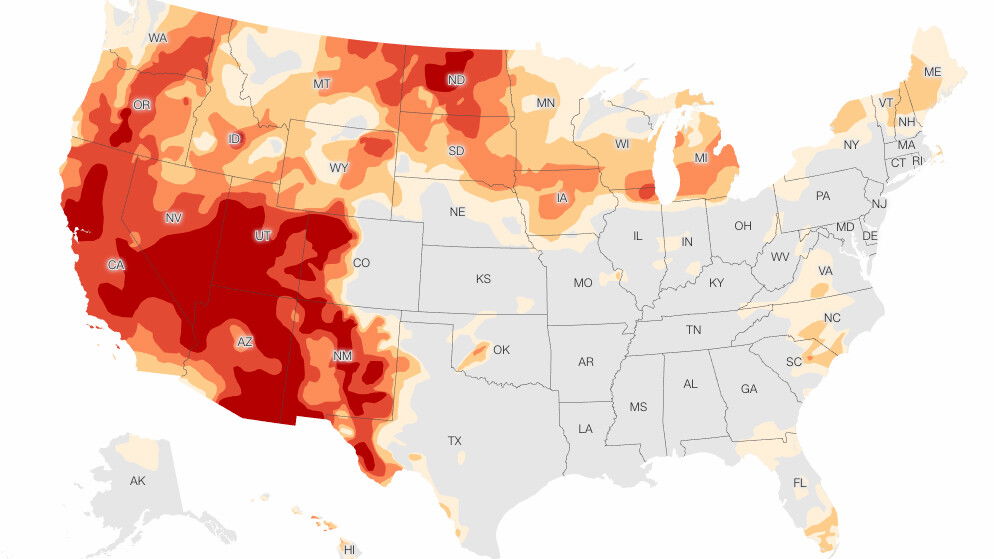The West’s historic drought in 3 maps

More than 25 percent of the West is in an exceptional drought
By John Keefe and Rachel Ramirez, CNN
An unprecedented heat wave worsened drought conditions in Northwest, according to the US Drought Monitor. Record-breaking temperatures in Oregon and Washington dried soil and vegetation further, leading to an expansion of moderate and severe drought in that region.
Vast swaths of the West remain in a historic and unrelenting drought, the worst in the region in at least 20 years. The most severe conditions are centered in the Southwest in California, Nevada, Utah and Arizona. But areas of extreme and exceptional drought extend north as well into Oregon and Washington, where oppressive weekend heat dried out the ground and vegetation even more.
Climate change is playing a key role in these compounding crises: Drought and extreme heat are fueling wildfires; reduced snowpack and the lack of substantial precipitation are exacerbating water demands for millions of people, as well as agriculture, ecosystems and deteriorating infrastructure.
In addition to mandatory water restrictions already in place, even stricter cuts are looming amid the drought in some states as water levels plummet along the Colorado River.
Current drought
Around 93% of the West is in some level of drought, up from 91% last week. Nearly 60% of the West is under ‘extreme’ or ‘exceptional’ drought — the two most severe classifications. It is the largest area of the West under those classifications in the 21-year history of the US Drought Monitor.
Conditions in much of the Southwest remained the same, though the drought in some areas, such as central Arizona, expanded. The drought has also sparked an increase in wildfire encounters in California, Nevada, and Utah.
The record-shattering heat waves in the Pacific Northwest also led to worsening drought conditions across the region.
As the planet warms, drought and extreme heat will also fuel deadly wildfires. Multiple studies have linked rising carbon dioxide emissions and high temperatures to increased acreage of burning across the West, particularly in California.
Rainfall outlook
The West experienced extremely low rain and snowfall over the past year, compounded by drastically high temperatures. Less rain and increasing heat waves have led directly to drought conditions and water shortages.
As climate change accelerates and winter temperatures increase, snowfall will decrease. High-elevation snowpack serves as a natural reservoir that eases drought, storing water through the winter months and slowly releasing it through the spring melting season.
Stream and river flow
Streamflow, a measure of how much water is carried by rivers and streams, is another significant indicator of drought and its impact.
As drought conditions have worsened in 2021, hundreds of stream and river locations are experiencing below-average flow. More than 50 percent of the western monitoring stations reported lighter-than-usual flows. Fishing restrictions have also been put in place on many rivers in Montana due to low flows and warm waters.
Changes in streamflow affect the water supply for our own municipal use, crop irrigation and power generation.
The-CNN-Wire
™ & © 2021 Cable News Network, Inc., a WarnerMedia Company. All rights reserved.

